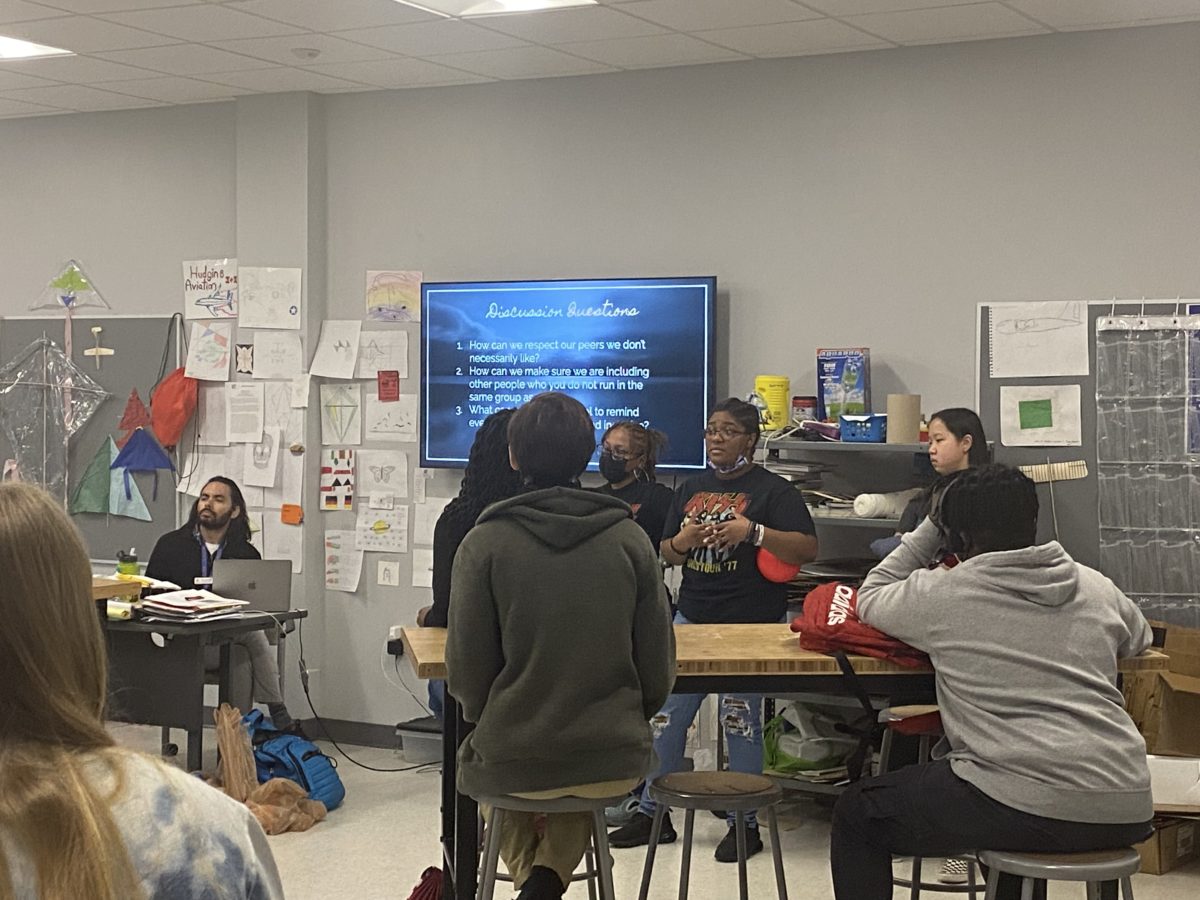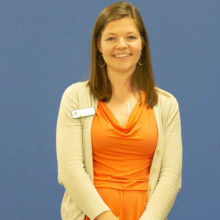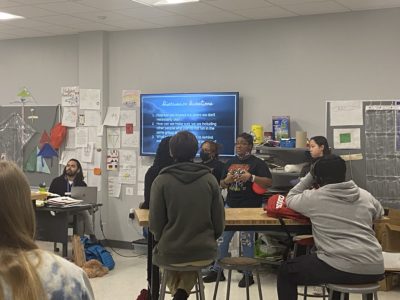
|
|
When students at Northeast Academy for Aerospace and Advanced Technologies returned to in-person instruction, they faced a tense situation in Elizabeth City. Students from nine different counties were gathering in a new school building — many interacting with each other for the first time — soon after the police killing of Andrew Brown, an unarmed Black man. In response to racist incidents, the school allowed students to lead the way, building a school culture around respect and inclusivity. This series includes five student perspectives and two perspectives from the guidance counselors in their own words.
I just wrapped up my fourth year working at Northeast Academy for Aerospace and Advanced Technologies (NEAAAT). This year I really felt my eyes and heart opening to what I was hearing from students and what their experiences were every day, even in school.
When students started to talk about not feeling welcomed — not feeling heard — I was initially taken aback. The other coaches and I do our best every day to put our students first, and I felt I was doing all I could to connect with all students and be available to them.
I was visible in the morning at drop-off, and I would make my way around the cafeteria at lunch. I always had an open door to students and responded to students and parent emails quickly. How could students not feel welcomed or included — especially by the staff?
When students were bringing up incidents that happened in school, things that were said to them or their friends, I was shocked. Students didn’t feel welcome. They didn’t feel included or heard. What could we do to change this?
Inclusiveness is one of our core values — everyone, students included, have a voice in decision-making. Everyone is a learner.
If I didn’t acknowledge what I was hearing from the students, I would not be working for them. I would not be putting the students first.
After reflecting on this a bit, I realized that students needed a space to feel heard. They needed someone to listen to them — and while it was my hope that they feel they could come to me, that simply was not always the case.
I tried to do things to help students feel welcomed and connected. I made an effort to meet individually with students I didn’t know very well in what I called “get to know you” meetings. I know it will, in most cases, take more than one time for students to build that trust with me.
But I still felt this was an inadequate response to what I was hearing. At NEAAAT we are called coaches, not teachers. We do not always need to have the answers, because we learn together and help guide each other. So we can’t be afraid to be vulnerable and uncomfortable, to open up conversations that need to be heard.
We have an advisory program designed for students to have the same advisor for four years. They get to know this “advisory” coach in a setting different than an academic class, and a relationship is built over time. This year was the second for the advisory program but our first with students being in the building face-to-face.
We strive to support students in an environment where students can challenge themselves and each other, respectfully. When a student brought up the idea that a conversation on respect and inclusiveness should be held with students, I first felt lost — where would we start? But I quickly stepped back and remembered that I am a coach — I do not need to have the answers. The conversations could be held peer-to-peer, with staff included but not leading.
So, in creating the respect and inclusiveness group, we wanted to keep students at the center.
We reached out to students in different grades and of different races. We approached students that were involved in different clubs. We asked them to start this conversation. We, as the coaches, provided the time and space for these students to meet and brainstorm their thoughts and determine what they wanted to accomplish.
Students created a presentation, discussion questions, and icebreaker activities. Students facilitated conversations with their peers through advisory classes. It is a start, not the end, but students now see that inclusiveness is an important core value of NEAAAT.
Many students come to NEAAAT because they want something different. They’re getting more of that now. Student voices are being heard, and I hope more students feel safe to come forward with concerns they may have.
There are improvements to be made, but all students need to have an adult at school they can trust, talk to, and feel supported by.
I am eager to see this continue in the fall as we expand to start the conversation schoolwide and have high school peers talk with middle school students. As educators we guide our students to be successful in life after high school. We prepare them for life when we are not there.
It doesn’t happen overnight. Students don’t go from being in school to graduating to being on their own just like that. We need to scaffold, slowly but surely, to provide students more independence. Using their voice and becoming active in these conversations is helping students be change-agents. As educators, we just need to be willing to let go of the reins sometimes.


